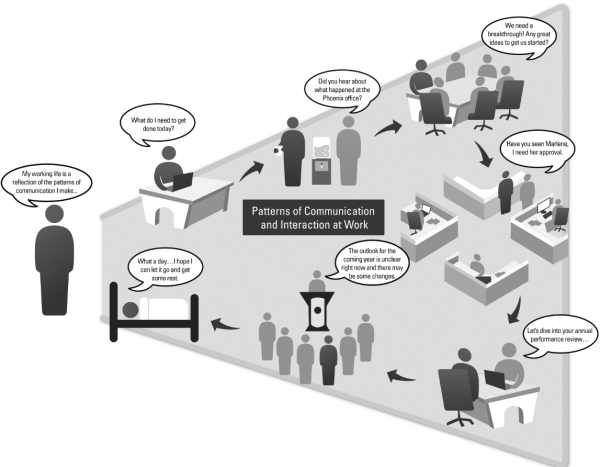Your Communication Is Your Working Life

The quality of your working life and the outcomes you experience are a reflection of the patterns of communication and interaction that you engage in throughout the day. If you want to know whether your stress level is rising or falling, check your patterns. If you want to know whether your working relationships are solid or faltering, check your patterns. And if you want to know about your performance and career trajectory, there are clues to both of these in your patterns. For example, a single day is filled with diverse, often intersecting communication experiences:
You are at your desk, planning your day, responding to messages, and wrapping your mind around what you need to be doing . . . you have casual interactions with coworkers in the hallway, kitchen, and by the water cooler that help you stay connected to what is happening with others . . . your team meets and relationships are tested and forged, information is shared, decisions are made, and actions are taken . . . you interface with a variety of coworkers, customers, and partners throughout the day via virtual and face to face connections to get work done . . . you meet with your manager and get feedback and direction for your work . . . and you participate in companywide meetings that keep you informed about the strategic and cultural direction the organization is heading . . . And finally, you bring the cumulative effects of these patterns of communication and interaction home with you to keep processing, interpreting, and deciding which action to take when you go back again.
If your job requires you to interact with other people (as virtually all of them do), then communication is an inevitable aspect of your working life. We could say that “work is communication” and “communication is work.” In this way of thinking about the nature of work, the rules are simple: You get what you make. You make it in communication. And if you notice and are intentional about the unwanted patterns you have made, you can re-make them into new patterns that produce better outcomes.

